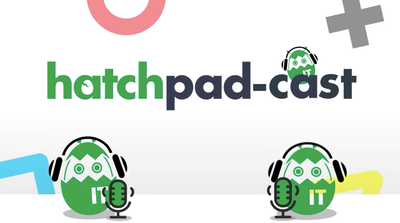
Security News
TypeScript is Porting Its Compiler to Go for 10x Faster Builds
TypeScript is porting its compiler to Go, delivering 10x faster builds, lower memory usage, and improved editor performance for a smoother developer experience.
Resort provides sorting capabilities to your Rails (4+) models.
##Install
$ gem install resort
Or in your Gemfile:
gem 'resort'
##Rationale
Most other sorting plugins work with an absolute position attribute that sets
the weight of a given element within a tree. This field has no semantic sense,
since "84" by itself gives you absolutely no information about an element's
position or its relations with other elements of the tree.
Resort is implemented like a linked list,
rather than relying on absolute position values. This way, every model
references a next element, which seems a bit more sensible :)
##Usage
First, run the migration for the model you want to Resort:
$ rails generate resort:migration product
$ rake db:migrate
Then in your Product model:
class Product < ActiveRecord::Base
resort!
end
NOTE: By default, Resort will treat all products as a single big tree.
If you wanted to limit the tree scope, i.e. treating every ProductLine as a
separate tree of sortable products, you must override the siblings method:
class Product < ActiveRecord::Base
resort!
def siblings
# Tree contains only products from my own product line
self.product_line.products
end
end
Multiple users modifying the same list at the same time could be a problem, so it's always a good practice to wrap the changes in a transaction:
Product.transaction do
my_product.append_to(another_product)
end
###API
Every time a product is created, it will be appended after the last element.
Moreover, now a product responds to the following methods:
first? — Returns true if the element is the first of the tree.append_to(other_element) — Appends the element after another element.prepend — Moves the element to the beginning of the list (sets it as
first).next — Returns the next element in the list.previous — Returns the previous element in the list.And the class Product has a new scope named ordered that returns the
products in order.
Given our Product example defined before, we can do things like:
Getting products in order:
Product.first_in_order # returns the first ordered product.
Product.last_in_order # returns the last ordered product.
Product.ordered # returns all products ordered as an Array, not a Relation!
Find ordered products with scopes or conditions:
Product.where('price > 10').ordered # => Ordered array of products with price > 10
Product.with_custom_scope.ordered # => Ordered array of products with your custom conditions
Modify the list of products:
product = Product.create(:name => 'Bread')
product.first? # => true
another_product = Product.create(:name => 'Milk')
yet_another_product = Product.create(:name => 'Salami')
yet_another_product.append_to(product) # puts the products right after the first one
Product.ordered.map(&:name) # => ['Bread', 'Salami', 'Milk']
Check neighbours:
product = Product.create(:name => 'Bread')
second_product = Product.create(:name => 'Milk')
third_product = Product.create(:name => 'Salami')
second_product.previous.name # => 'Bread'
second_product.next.name # => 'Salami'
third_product.next # => nil
Maybe you need different orders depending on the product vendor:
class Product < ActiveRecord::Base
resort!
belongs_to :vendor
def siblings
self.vendor.products
end
end
bread = Product.create(:name => 'Bread', :vendor => Vendor.where(:name => 'Bread factory'))
bread.first? # => true
milk = Product.create(:name => 'Milk', :vendor => Vendor.where(:name => 'Cow world'))
milk.first? # => true
# bread and milk aren't neighbours
##Under the hood
Run the test suite by typing:
rake spec
You can also build the documentation with the following command:
rake docs
Copyright (c) 2011 Codegram. See LICENSE for details.
FAQs
Unknown package
We found that resort demonstrated a not healthy version release cadence and project activity because the last version was released a year ago. It has 3 open source maintainers collaborating on the project.
Did you know?

Socket for GitHub automatically highlights issues in each pull request and monitors the health of all your open source dependencies. Discover the contents of your packages and block harmful activity before you install or update your dependencies.

Security News
TypeScript is porting its compiler to Go, delivering 10x faster builds, lower memory usage, and improved editor performance for a smoother developer experience.

Research
Security News
The Socket Research Team has discovered six new malicious npm packages linked to North Korea’s Lazarus Group, designed to steal credentials and deploy backdoors.

Security News
Socket CEO Feross Aboukhadijeh discusses the open web, open source security, and how Socket tackles software supply chain attacks on The Pair Program podcast.